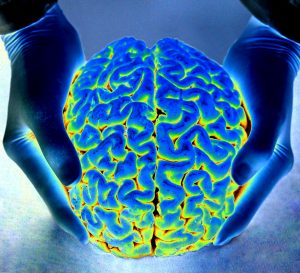Schizophrenia Library
The Schizophrenia Library provides reliable and quality assessed information. This information comes from peer-reviewed systematic reviews covering over 450 topics on schizophrenia. These topics include signs and symptoms, diagnosis, treatments, causes and antecedents, incidence and prevalence, outcomes, co-occurring mental and physical disorders, the physical features of schizophrenia, and insights for families. Topics can be accessed by clicking on the links above. Or use the drop-down menu or search bar on the left or click on the tabs below.
There are two levels of information on each topic. The first is a Factsheet that provides general information describing the topic and the evidence that is available on that topic. The second is a Technical Commentary that provides more detailed information, including the topic’s background, methods, detailed results, and links to references. Printable PDFs of factsheets and technical tables are available to download from each topic page.
Image: ©pressmaster – stock.adobe.com

Diagnosis and assessment
A diagnosis of schizophrenia is not a simple one, with symptoms varying across individuals. This category contains information about diagnosis of schizophrenia, schizoaffective disorder, schizophreniform disorder, and early detection tools for identifying those at risk of a first episode of psychosis. It also contains information on tools used to assess symptoms and functioning. Click on the links or the tabs below to access the information, or browse the drop-down menu to the left. Image: ©adiruch na chiangmai - stock.adobe.com

Signs and symptoms
The presentation of schizophrenia is often highly varied between individuals, making a clear delineation of symptoms difficult. However there are a range of signs and symptoms identified which comprise the schizophrenia diagnosis. These include positive, negative, and disorganised symptoms, as well as cognitive symptoms incorporating both social and neuropsychological dysfunction. Social dysfunction may include emotion processing, lack of illness insight and altered theory of mind, while neuropsychological dysfunction may include problems with attention, executive functioning, learning, decision making and memory. Click on the tabs below to access all the topics, or browse via the drop-down menu on the left.. Image: © 2020 Andrew Ostrovsky - stock.adobe.com

Treatments
The treatment of schizophrenia is a complicated issue requiring a treatment plan tailored to each individual’s needs, which needs to be overseen by mental health professionals. This topic covers the range of treatment options available, including pharmaceutical, non-pharmaceutical and psychotherapy. It is extensive and sometimes controversial comprising both traditional, adjunctive, and alternative approaches. Click on the tabs below to access all the information, or browse via the drop-down menu on the left. Image: ©freshidea – stock.adobe.com

Risk factors and antecedents
Schizophrenia is a complex disorder and has been associated with many risk factors. With a heritability estimate around 80%, schizophrenia has a strong genetic component and this is reflected in the large number of genes that have been associated with the disorder. The library provides general genetic information, information on family heritability, and on environmental risk factors that have been associated with the disorder. We also include information on the antecedents of schizophrenia, which are potentially very early signs of the disorder and may help identify those at risk of developing the disorder. Click on the tabs below to access the information, or browse the drop-down menu on the left. Image: ©iQoncept - Fotolia - stock.adobe.com

Illness course and outcomes
The course and outcomes of schizophrenia vary widely between individuals. This category considers a range of outcomes in chronic, early and late-onset schizophrenia, and first-episode psychosis. Outcomes affecting day to day life include quality of life, relationships, culture, employment, homelessness, violence and self-harm, substance use, and recovery and relapse. Click on the tabs below to access all the information, or browse via the drop-down menu on the left. Image: ©Pavel Timofeev - stock.adobe.com

Insights for families
Schizophrenia impacts not only on the individual with the disorder, but also on their families. This category contains information on the impact of schizophrenia on the family unit, family relationships, and also cognitive and physiological alterations in relatives. Click on the tabs below to access all the information, or browse via the drop-down menu on the left. Image: ©Kudryashka – stock.adobe.com

Physical features
People with schizophrenia can have physical alterations in their central nervous system. In this category these alterations have been organised into functional and structural changes. Click on the tabs below to access this information, or browse via the drop-down menu on the left. Image: ©stock.adobe.com

Co-occurring conditions
People with schizophrenia may have co-occurring (comorbid) mental and/or physical disorders. Common mental comorbid conditions include substance use, anxiety, depression, autism spectrum, and personality disorders. Common physical comorbid conditions include heart disease, metabolic syndrome, and visual impairment, but lower rates of some cancers. Click on the links or the tabs below to access the information, or browse via the drop-down menu on the left. Image: ©Maksym Dykha – Fotolia – stock.adobe.com

Incidence and prevalence
A population perspective provides epidemiological estimations of the incidence and prevalence of schizophrenia in different populations and regions worldwide. This category also considers the burden of schizophrenia and the implications for mental health laws and policies on the treatment and management of the disorder. Click on the tabs below to access the information, or browse via the drop-down menu on the left. Image: ©tai111 – Fotolia – stock.adobe.com

General information
This section includes general information on the schizophrenia library, such as privacy and security, as well as answers to frequently asked questions (FAQs). Image: ©connel_design – stock.adobe.com
Green - Topic summary is available.
Orange - Topic summary is being compiled.
Red - Topic summary has no current systematic review available.
